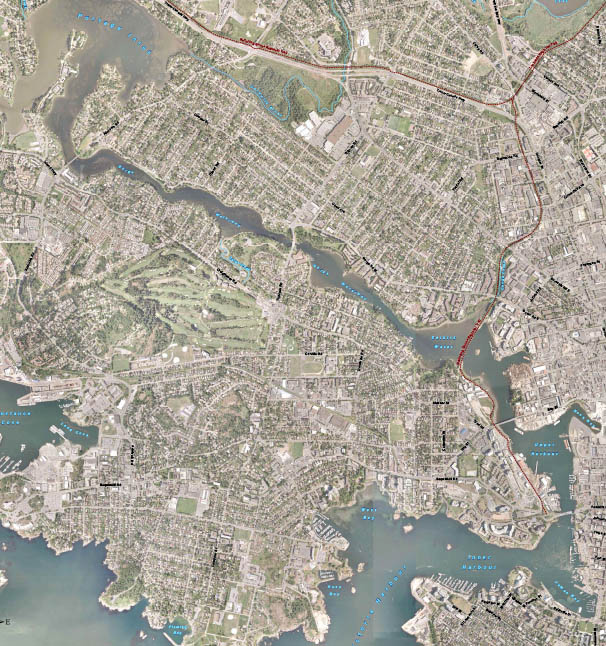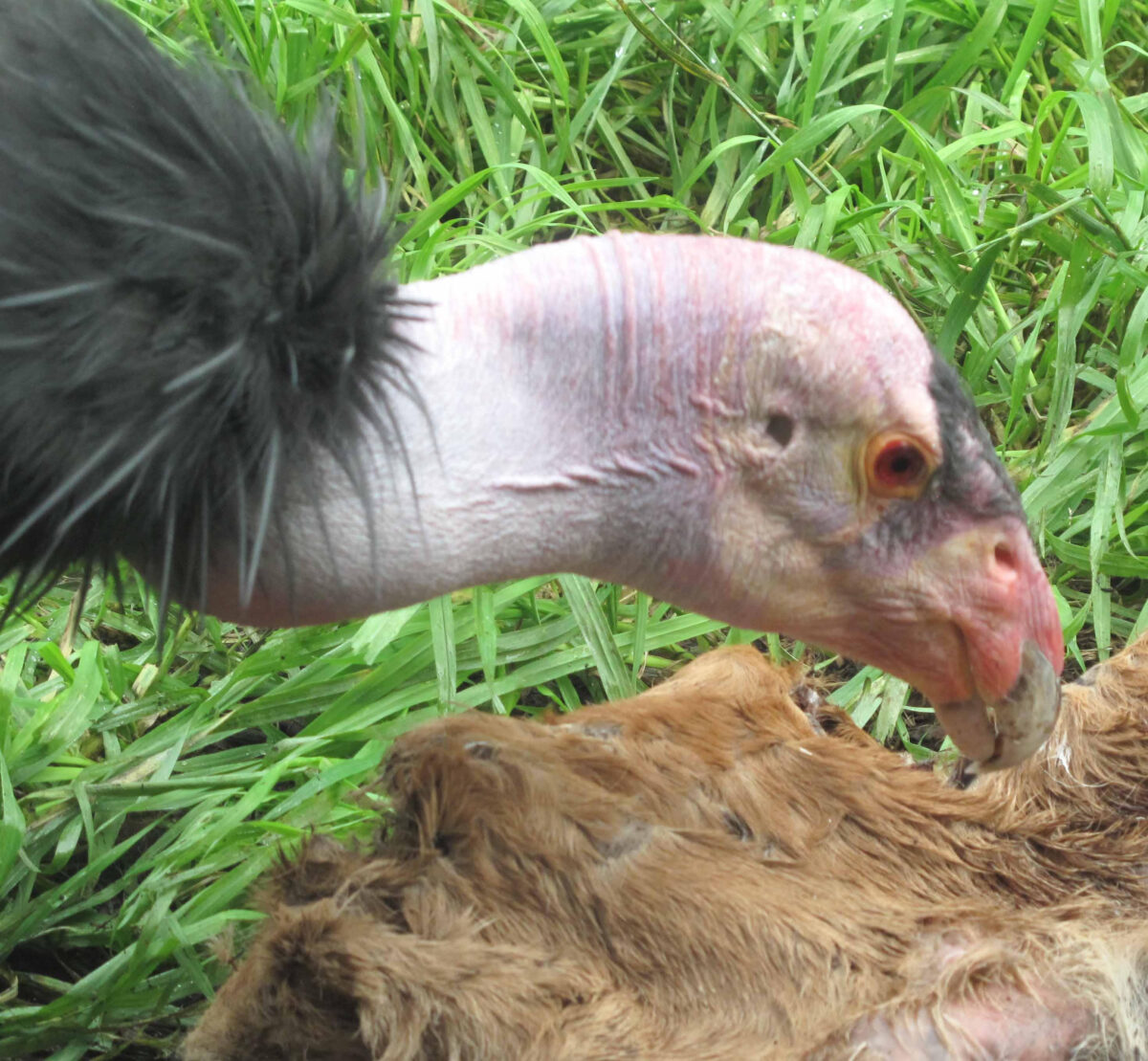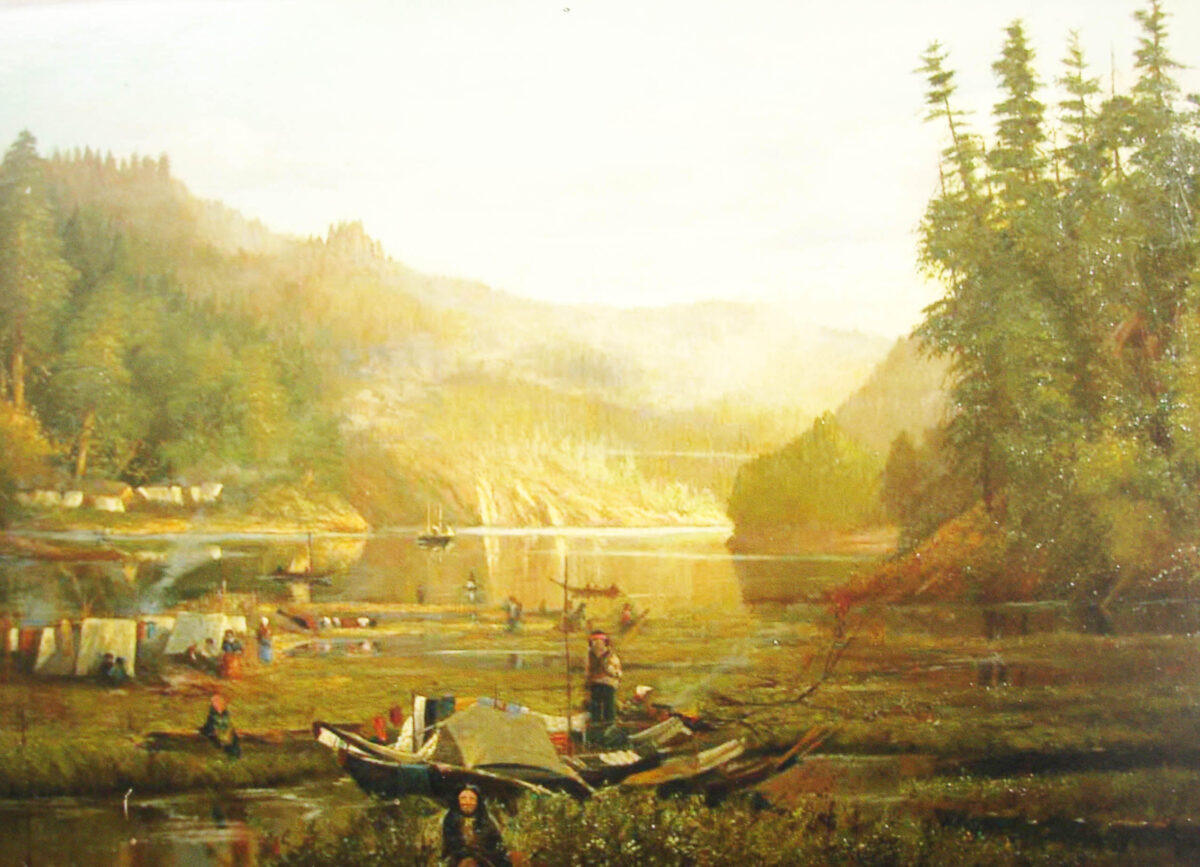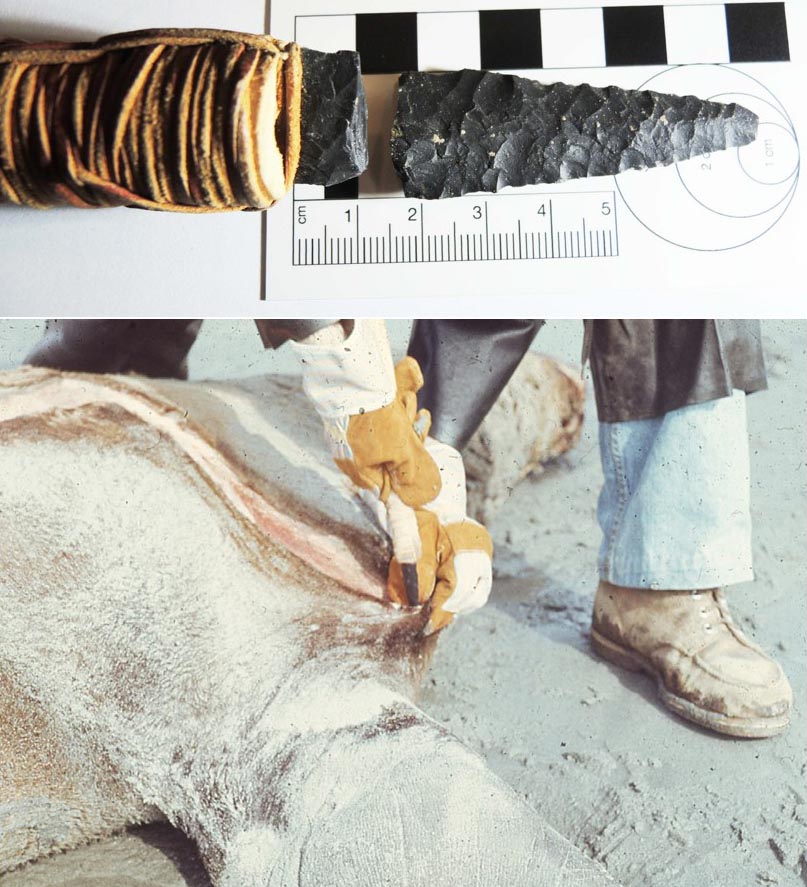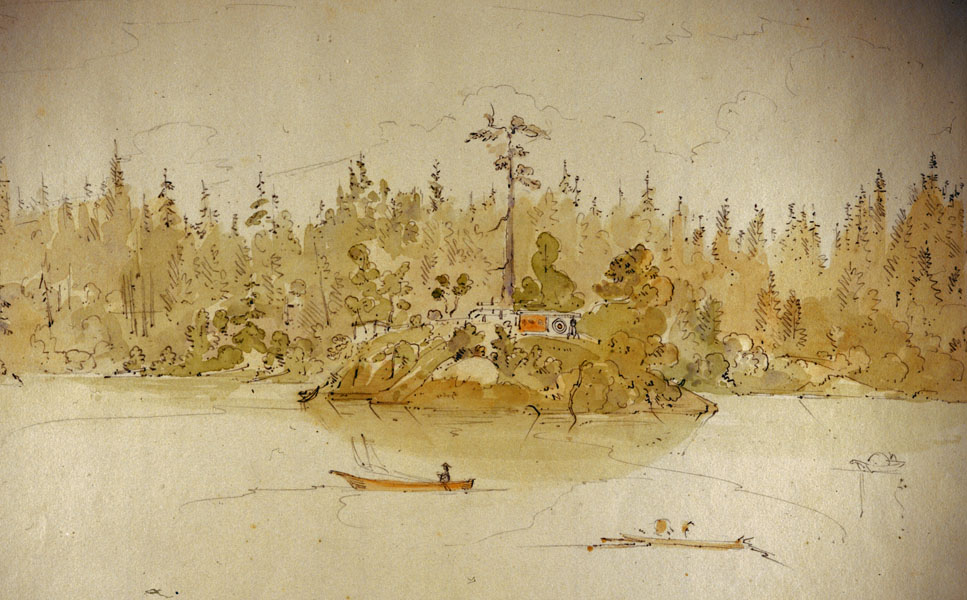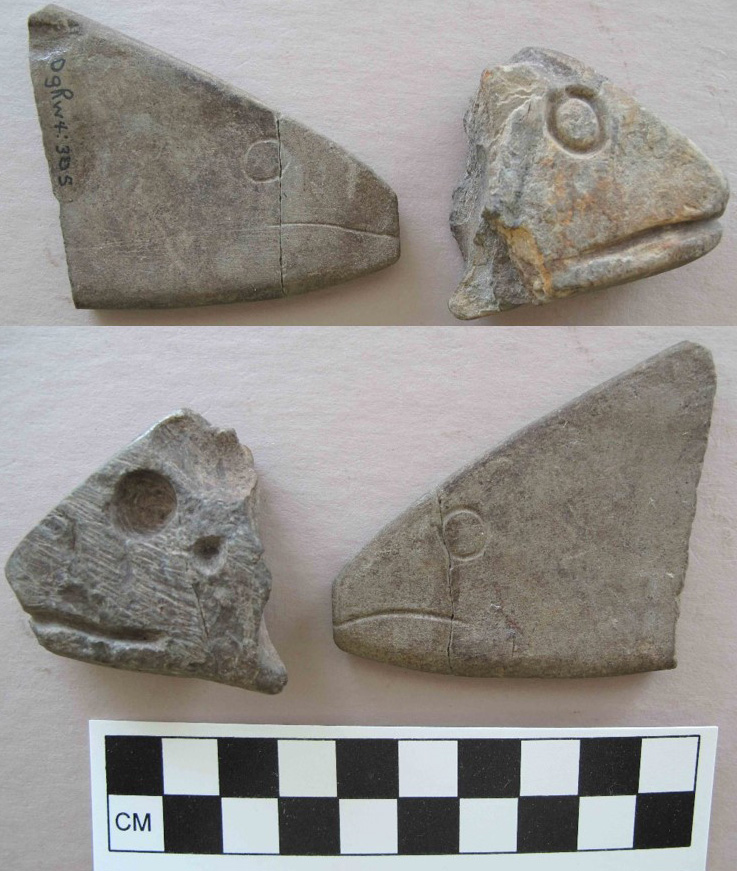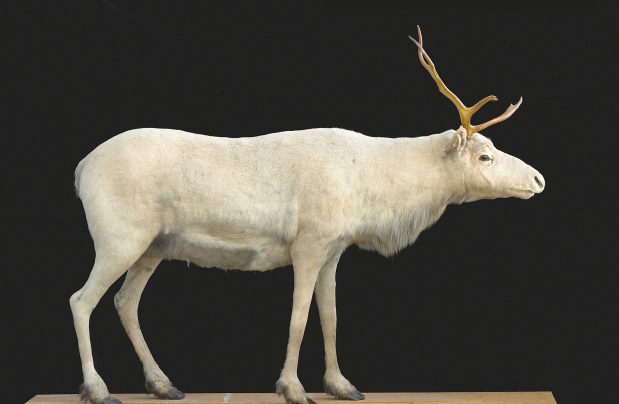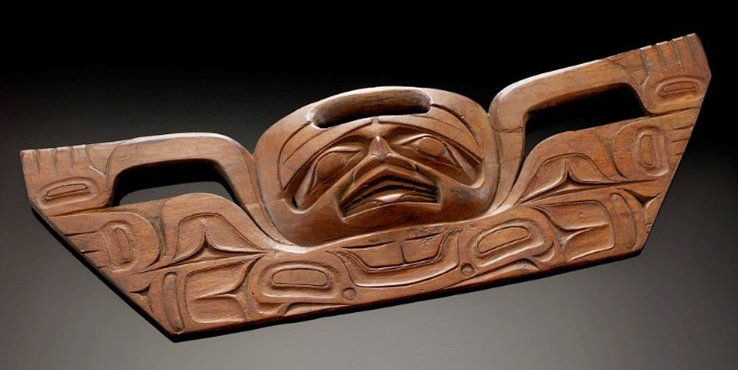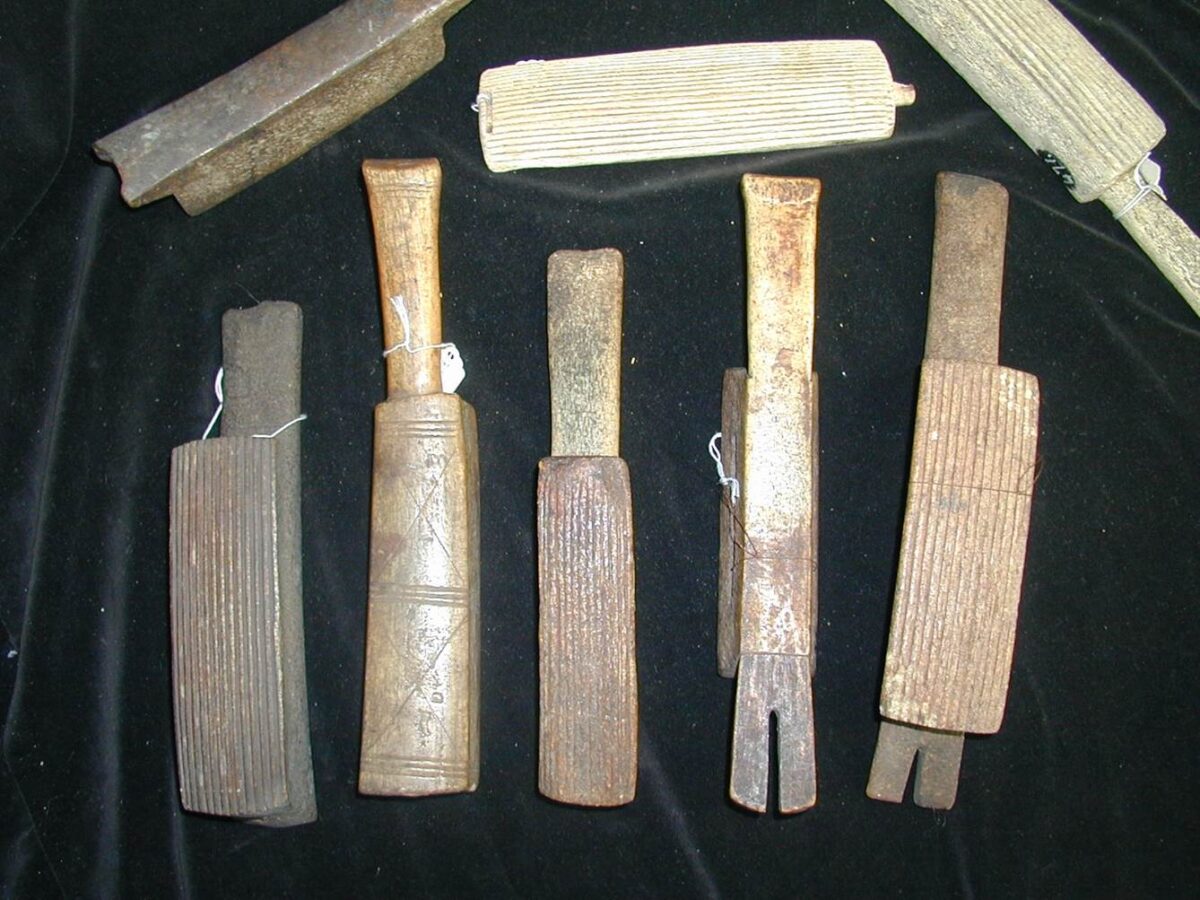
In the collection of the Royal B.C. Museum there is a unique distal section of an adzing tool composed of an elk antler sleeve with a nephrite adze blade still in place. There has been a debate as to weather these were fit onto the end of a strait chisel or a bent elbow adze and why some adzes were angled toward one side at the proximal end. Many broken to complete elk antler hafts have been found in ancient sites in the general area around the Salish Sea, but finding one with the cutting blade still in-situ is extremely rare. This one, with the Borden number DfRs-Y:11, is a very rare example. It was found in a midden at … Continue reading “Observations on the Shape of Adze Blades and Hafts”
